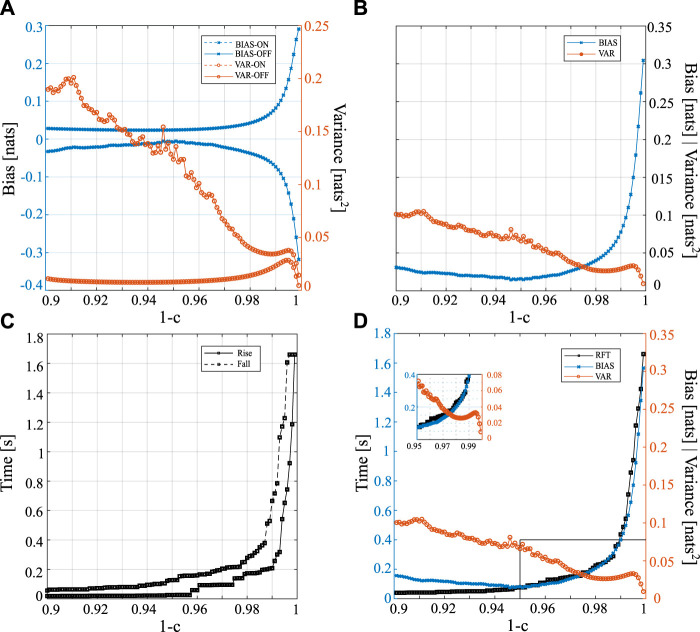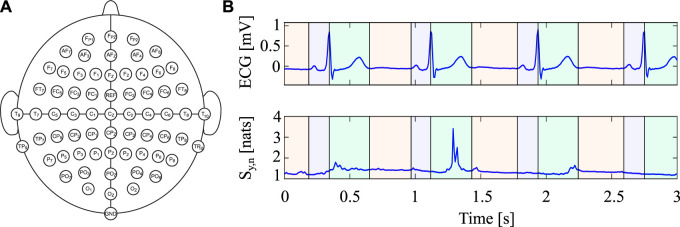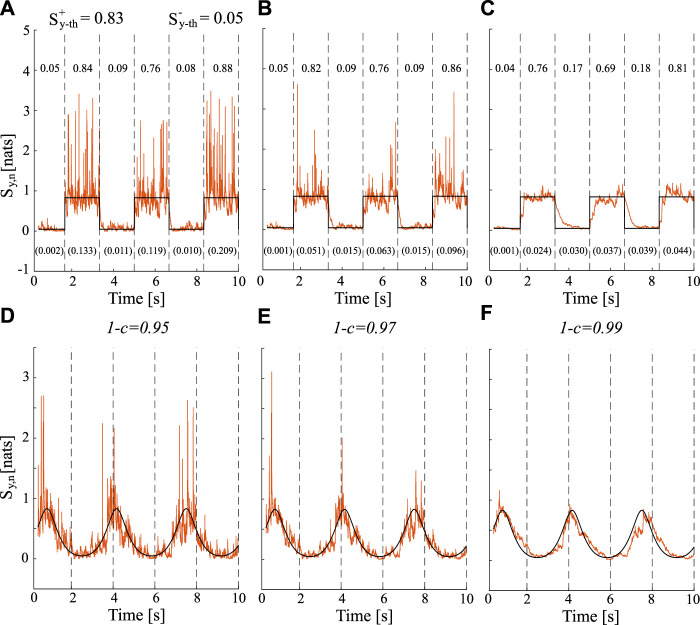Time-varying information measures: an adaptive estimation of information storage with application to brain-heart interactions.
IF 3
Frontiers in network physiology
Pub Date : 2023-10-18
eCollection Date: 2023-01-01
DOI:10.3389/fnetp.2023.1242505
引用次数: 0
Abstract
Network Physiology is a rapidly growing field of study that aims to understand how physiological systems interact to maintain health. Within the information theory framework the information storage (IS) allows to measure the regularity and predictability of a dynamic process under stationarity assumption. However, this assumption does not allow to track over time the transient pathways occurring in the dynamical activity of a physiological system. To address this limitation, we propose a time-varying approach based on the recursive least squares algorithm (RLS) for estimating IS at each time instant, in non-stationary conditions. We tested this approach in simulated time-varying dynamics and in the analysis of electroencephalographic (EEG) signals recorded from healthy volunteers and timed with the heartbeat to investigate brain-heart interactions. In simulations, we show that the proposed approach allows to track both abrupt and slow changes in the information stored in a physiological system. These changes are reflected in its evolution and variability over time. The analysis of brain-heart interactions reveals marked differences across the cardiac cycle phases of the variability of the time-varying IS. On the other hand, the average IS values exhibit a weak modulation over parieto-occiptal areas of the scalp. Our study highlights the importance of developing more advanced methods for measuring IS that account for non-stationarity in physiological systems. The proposed time-varying approach based on RLS represents a useful tool for identifying spatio-temporal dynamics within the neurocardiac system and can contribute to the understanding of brain-heart interactions.



时变信息测量:信息存储的自适应估计,应用于脑心互动。
网络生理学是一个快速发展的研究领域,旨在了解生理系统如何相互作用以保持健康。在信息理论框架内,信息存储(IS)允许在平稳性假设下测量动态过程的规律性和可预测性。然而,这种假设不允许随着时间的推移跟踪生理系统的动态活动中发生的瞬态途径。为了解决这一限制,我们提出了一种基于递归最小二乘算法(RLS)的时变方法,用于在非平稳条件下估计每个时刻的IS。我们在模拟时变动力学和分析健康志愿者记录的脑电图(EEG)信号中测试了这种方法,这些信号与心跳同步,以研究大脑与心脏的相互作用。在模拟中,我们表明所提出的方法可以跟踪存储在生理系统中的信息的突然和缓慢变化。这些变化反映在其随时间的演变和变化中。对脑-心相互作用的分析揭示了时变IS的变异性在心动周期各阶段的显著差异。另一方面,平均IS值在头皮的顶帽区域表现出微弱的调节作用。我们的研究强调了开发更先进的测量IS的方法的重要性,这些方法解释了生理系统中的非平稳性。所提出的基于RLS的时变方法是识别神经心系统内时空动力学的有用工具,有助于理解脑心相互作用。
本文章由计算机程序翻译,如有差异,请以英文原文为准。
求助全文
约1分钟内获得全文
求助全文

 求助内容:
求助内容: 应助结果提醒方式:
应助结果提醒方式:


